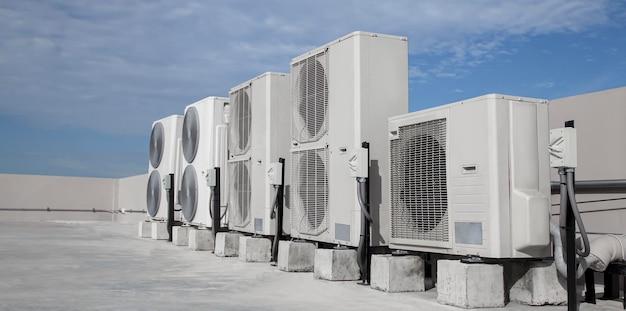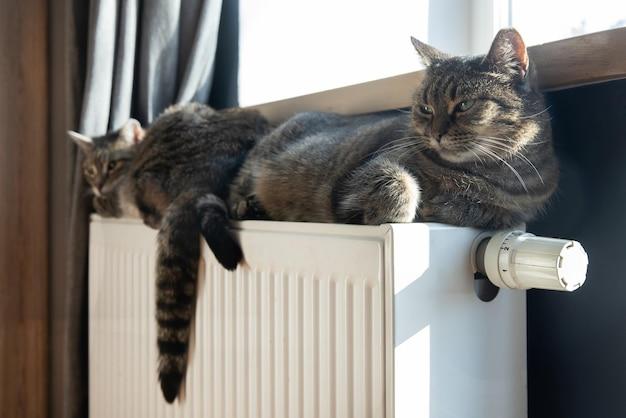Are you familiar with the term “fur down,” especially when it comes to HVAC systems? You might have come across the term while researching air handlers, ceiling systems, or something similar. But what is a fur down HVAC, and how does it work? In this blog post, we will explore the concept of fur down HVAC in detail.
What is a fur down unit, and what does the term “fur down” mean? How does it benefit your HVAC system, and what are the different types of air handlers available? We’ll answer these questions and more in this comprehensive guide.
Whether you are a homeowner, a builder, or an HVAC technician, maintaining indoor air quality is crucial for the comfort and health of occupants. Understanding the different types of air handlers and their applications can help you identify the best HVAC solutions for your building’s needs.
So, if you’re curious to learn more about fur down HVAC, keep reading. We’ve got you covered with all the information you need to know about this fascinating topic.
The Function and Importance of Fur Down in HVAC Systems
When it comes to heating, ventilation, and air conditioning (HVAC) systems, fur downs play an essential role. A fur down is an enclosed portion of the ceiling where ductwork, wiring, or plumbing is hidden. In HVAC systems, fur downs usually house ductwork. These concealed ducts are necessary to distribute and circulate air evenly throughout the building while preventing heat or cool loss.
The Benefits of Fur Downs
Fur downs offer an array of benefits for HVAC systems. First, they can improve energy efficiency by minimizing air leakage and pressure loss. Properly installed fur downs ensure that the ductwork is enclosed within a sealed and insulated environment, reducing the amount of heated or cooled air escaping into unconditioned spaces. As a result, the HVAC system works effortlessly and efficiently, using less energy to maintain temperature control.
Second, fur downs help with noise control. They minimize the amount of airflow noise that comes from the ducts, creating a quieter and more comfortable living or working environment. This is particularly important for homes or commercial buildings situated in noisy locations.
Lastly, fur downs provide an aesthetic appeal to buildings that use HVAC systems. They conceal unsightly ducts, electrical wiring, or plumbing, creating a smooth and uniform ceiling surface.
Maintenance of Fur Downs
It is important to ensure regular maintenance of fur downs. This includes changing air filters to keep ducts clean, inspecting for any visible damage or leaks, and proper insulation. Clogged or dirty filters can reduce airflow, which increases energy usage and could cause unnecessary wear and tear on the system. The inner lining of the ducts should be cleaned once or twice a year, depending on the level of usage and the environment.
Fur downs are an essential element in HVAC systems, providing energy efficiency, noise control, and an attractive appearance to buildings. Routine inspection and maintenance of fur downs should be a priority to ensure optimum functionality, prolong the lifespan of HVAC systems, and prevent issues that could lead to costly repairs.
Fur Down Ceiling
A fur down ceiling in HVAC is the section of a ceiling that is lowered or dropped. This mechanism hides HVAC ductwork or plumbing. Fur down ceilings are common in basements, bathrooms, laundry rooms, and kitchens. They help to create a more streamlined and aesthetically pleasing look by hiding unsightly piping and ductwork. But what exactly is a fur down ceiling, and how does it work?
What is a Fur Down Ceiling
A fur down ceiling is a lowered ceiling that houses HVAC ductwork, plumbing, or electrical wiring. Contractors lower the ceiling in a particular section to hide the unsightly ductwork/plumbing. The dropped ceiling can be covered with drywall or another material to make it look like a seamless part of the room. This mechanism not only enhances the aesthetic of the space but also provides additional insulation for HVAC ductwork. The insulation minimizes noise disturbance, thereby creating a more comfortable environment.
Advantages of a Fur Down Ceiling:
Additional insulation:
A fur down ceiling helps to insulate HVAC ductwork. The insulation helps to minimize sound disturbance and improves energy efficiency. Additionally, it reduces heat loss during winter and heat gain during summer.
Aesthetically pleasing:
A fur down ceiling is an effective way to hide unsightly ductwork or plumbing and gives your house a neater look. It can also be an excellent way to add lighting and create ambiance to space.
Conceals imperfections:
A fur down ceiling can be helpful if you want to hide imperfections in your ceiling but don’t want to redo the entire ceiling. It also creates a more consistent look throughout the room in terms of ceiling height.
Fur down ceilings are a practical solution to hiding unsightly HVAC ductwork or plumbing. They enhance the aesthetics of a room and provide additional insulation for HVAC ductwork. If you’re looking for a way to spruce up your space, consider installing a fur down ceiling.
What is a Furdown Unit
If you’re a homeowner, you might come across the term “furdown” from time to time. At its simplest, a furdown refers to a lowered ceiling in a room that houses air ducts and other HVAC components. In this subsection, we’ll explore what furdown units are, their purpose, and why you might consider having them installed in your home.
What Are Furdown Units
In HVAC terminology, a furdown unit is a type of air conditioning or heating system installed in a lowered ceiling. This lowered ceiling, also known as a soffit, hides air ducts, electrical wiring, and other mechanical components of an HVAC system. A furdown can be customized to fit a room’s specific dimensions and can be made from plasterboard, drywall, or other materials.
When Would You Need a Furdown Unit
There are several reasons why you might consider installing a furdown unit in your home. One reason is to improve aesthetics. By installing a furdown unit, you’re hiding unsightly ductwork, pipes, and other mechanical components that could take away from the beauty of your home. Additionally, a furdown unit can help to increase energy efficiency by reducing the amount of air escaping through ducts and cracks.
How Does a Furdown Unit Work
A furdown unit works similarly to any other air conditioning or heating system. The primary difference lies in its installation. By creating a lowered ceiling, you’re able to conceal the ductwork and components necessary for heating and cooling your home. From there, air is distributed throughout the house through vents or grilles.
In conclusion, a furdown unit is an innovative way to enhance both the visual appeal and energy efficiency of your home’s heating and cooling system. Whether you have a new build or an established home, the unique features of a furdown unit are certain to leave a lasting impression. Consider speaking with an HVAC expert to determine if a furdown unit is the right fit for your home’s unique needs.
What Does Furr Down Mean
If you’ve ever heard the term “furr down” in relation to HVAC systems, you may not be entirely sure what it means. In short, a furr down is a dropped ceiling that hides ductwork or other mechanical systems. These are common in homes and commercial buildings alike and are often found in kitchens or bathrooms.
Why Do You Need a Furr Down for Your HVAC System
There are several reasons why you might want or need a furr down for your HVAC system. For one, it can help improve the aesthetic appearance of your home by hiding unsightly ductwork. Moreover, it can help make your space more efficient by allowing you to run your ductwork through tighter spaces.
How is Furr Down Made
Furr downs are typically made from drywall, plywood, or other suitable building materials. The process involves creating a suspended or dropped ceiling that creates a cavity between the actual ceiling and the furr down. The ductwork is then run through this cavity, allowing it to be hidden from view.
Is Furr Down the Same as Soffit
While furr downs and soffits are similar in concept, they are not the same thing. A soffit is a lowered ceiling that runs along the perimeter of a room. It is often used to hide HVAC ductwork or electrical wiring. In contrast, furr downs are typically located in a specific area of the room.
In summary, a furr down is a useful component of an HVAC system that can help improve the overall look and efficiency of your home. Whether you’re looking to hide unsightly ductwork or make your system more compact, a furr down could be just what you need. Now that you know what it is, you’ll be able to make informed decisions about your HVAC system and its components.
What Is a Fur-Down Air Handler
A fur-down air handler is a type of heating, ventilation, and air conditioning (HVAC) system that is installed in a soffit or fur-down ceiling. It is also known as a “ceiling-mounted air handler.” The primary function of a fur-down air handler is to circulate air throughout a home or building by blowing it through a network of ducts.
How Does It Work
The fur-down air handler is typically installed in a small, framed-out area in the ceiling, often with a decorative paneling of some kind covering it. From there, it connects to ductwork that sends conditioned air to various rooms in the building. This type of system is typically used in homes or buildings with limited space for other types of HVAC systems.
Advantages of Using a Fur-Down Air Handler
One of the main advantages of using a fur-down air handler is that it takes up minimal space. Since it is mounted in the ceiling, it does not take up any floor space, making it ideal for smaller homes. Additionally, because it is a single system that cools the entire home, it is more energy-efficient than using individual air conditioning units in each room.
Disadvantages of Using a Fur-Down Air Handler
One potential drawback of using a fur-down air handler is that it can be more difficult to service than other types of HVAC systems. Since it is mounted in the ceiling, it can be harder to access for repairs or routine maintenance. Additionally, because it is a single system that cools the entire home, it can be less effective than using individual air conditioning units in each room.
Overall, a fur-down air handler can be a useful HVAC system for homes or buildings with limited space. While there are some potential drawbacks to using this type of system, it can be an effective way to circulate air and keep homes cool. If you are considering installing a fur-down air handler, it is important to weigh the advantages and disadvantages to determine if it is the right choice for your home or building.
What is a Fur Down in Construction
When you walk into a house or building and you happen to look up, you might notice that some areas of the ceiling might be lower than others, creating a sort of bulkhead or drop-down section. This is known in construction as a fur down.
Definition of a Fur Down
A fur down can be described as an area of the ceiling that has been lowered or “dropped down” to accommodate piping, ductwork, or electrical wiring. It is usually found in the kitchen or bathroom, where it is necessary to run all sorts of wires, pipes, and ductwork to provide essential services to the house.
Reasons for Creating a Fur Down
The main reason why builders and contractors create a fur down is to conceal unsightly pipes, ductwork, and electrical wiring. A fur down is a quick and easy way to hide all sorts of unattractive components from view. It can also be used to create a sense of depth and texture in a room, which can be aesthetically pleasing.
Materials Used for Creating a Fur Down
Traditionally, a fur down was made of plaster or drywall. However, in recent years, more modern and energy-efficient materials are being used such as foam insulation boards, which insulate and hide the unsightly components. This gives it an overall cleaner look which can complement the fixtures and furnishings in the room.
To sum up, a fur down is a lowered area of the ceiling that is used to hide pipes, ductwork, and wiring. It is a common feature in kitchens and bathrooms and serves as a way to create an aesthetic flow to the room. Fur downs are made of different materials, from traditional plaster and drywall to more modern materials such as foam insulation boards.
What is Another Name for the Air Handler
An air handler is a crucial component of an HVAC system that ensures proper airflow and temperature control in a building. However, it’s not uncommon for people to refer to this component by different names, depending on their knowledge of HVAC systems.
The Blower Unit
One common alternative name for an air handler is the blower unit. This name is mostly used to describe the part of the air handler that is responsible for circulating air through the ductwork in a building. The blower unit consists of a motor, fan, and other components that work together to move air from the HVAC system into your home.
The Air Handling Unit (AHU)
Another name for an air handler is the Air Handling Unit (AHU). This name is used more frequently in commercial buildings and industrial settings, where HVAC systems are usually larger and more complex than residential HVAC systems. An AHU consists of multiple components, including the blower unit, heat exchanger, humidifier, dehumidifier, and air filter.
Whether you call it an air handler, blower unit, or air handling unit, the purpose remains the same – to help regulate the airflow and temperature in your home or building. While these are just a few alternate names for the air handler, it’s important to know the correct terminology when discussing your HVAC system with a professional. Using the proper terminology can help you communicate more effectively and ensure that your HVAC system is running at peak performance.
What is the HVAC System in the Attic Called
When it comes to maintaining the temperature of your house, there is nothing better than an HVAC system. It’s the perfect system that keeps your dwelling cool in the summer and warm in the winter. But have you ever wondered what the HVAC system in the attic is called? Let’s explore it.
Understanding HVAC
Before we dive into the specific part of the HVAC system, let’s take a step back and understand exactly what we are dealing with. HVAC stands for Heating, Ventilation, and Air Conditioning. HVAC systems are designed to maintain a comfortable temperature and air quality in your home.
The Attic Unit
The HVAC system has two main parts: the outdoor unit and the indoor unit. The indoor unit is specifically designed to handle the heating and cooling of your home. It’s responsible for taking the air that it receives from the outside unit and distributing it throughout your home.
So, the HVAC system in your attic is simply referred to as the attic unit. This unit is designed to handle the heating and cooling requirements of your house, just like the indoor unit located in your basement. However, the attic unit is different from the indoor unit and also has specific requirements.
Why is it Placed in the Attic
One of the biggest benefits of having the HVAC unit placed in the attic is that it frees up more space in your home. This space can be utilized in many ways, such as for storage or an extra room.
Additionally, the attic provides adequate insulation to the HVAC unit. The attic helps keep the unit cooler in the summer and warmer in the winter, which ultimately results in a better HVAC performance. Plus, the attic unit also reduces the amount of noise that is generated in your home when the system is active.
The HVAC system in your attic is known as the attic unit. It’s an essential part of the HVAC system and is responsible for maintaining a comfortable temperature and air quality in your home. By keeping the attic unit in the attic, you free up valuable space inside your home and also enjoy better HVAC performance.
Different Types of Air Handlers
Air handlers are an essential part of a heating, ventilation, and air conditioning (HVAC) system, responsible for circulating warm or cool air through the ductwork and into the home. There are various types of air handlers, each with unique features that suit specific installation requirements.
Standard Air Handlers
Standard air handlers are the most common type found in residential and commercial properties. They feature a blower, heat exchanger, and air filter. These components work together to condition and circulate indoor air throughout the building. Some standard air handlers come equipped with variable speed motors, allowing them to adjust the airflow to match the temperature demands of the space.
Modular Air Handlers
Modular air handlers refer to units that have more than one blower located in different parts of the system. The modular design allows for greater flexibility and customization, making it easier to adapt to different heating and cooling requirements. They can accommodate larger spaces and provide additional heating and cooling capacity for a more comfortable indoor environment.
Dedicated Outdoor Air Systems (DOAS)
Dedicated Outdoor Air Systems, or DOAS, are designed to introduce fresh air into the building while exhausting stale air outside. The air is filtered, cooled, or heated before entering the building, creating a comfortable and healthy environment. DOAS units work best in commercial or industrial spaces with high occupancy rates because they can improve indoor air quality and minimize the spread of airborne diseases.
Heat Pump Air Handlers
Heat Pump Air Handlers feature an air-to-air heat exchanger, which can provide both heating and cooling functions. The heat pump absorbs heat from outdoor air and transfers it inside during the colder months, while reversing the process to cool the space during warmer months. They are highly efficient and energy-saving, providing a cost-effective solution for homeowners.
Choosing the appropriate type of air handler is essential for maintaining a comfortable and healthy indoor environment. It is important to consider factors such as the type of building, the number of occupants, and the climate when choosing an air handler. With the various options available, understanding the different types of air handlers can help homeowners make informed decisions when purchasing one for their property.



